Razi Jafri documents the Muslim experience in America
Razi Jafri is pretty new to the world of filmmaking. After working as an engineer for 10 years, the Detroit resident quit his job in 2015 to pursue work that was more meaningful to him. He just didn’t yet know what that was going to be.
“For a long time working as an engineer in corporate America, I felt there was a disconnect between my values and my work,” he says. “My activism work started in college. After college I thought about how I could choose a profession where I can make a difference in people’s lives, but I was really confused over how I could do that. It took a personal loss—going through a divorce—then I stopped caring and was ready to start over.”
He had always nurtured an interest in photography, so he started pursuing the hobby more seriously in 2015. By the next year, he was accepted into the 2016 fellowship cohort of Documenting Detroit, a community photojournalism initiative. Through that yearlong fellowship he received mentorship to create a documentary photo essay called “Muslim in Detroit.” At the end of the fellowship, the completed works of the 21 fellows were projected onto an external wall of the Detroit Institute of Arts to hundreds of spectators.
“That basically started my career as a photographer and gave me the confidence to start working on stories,” says Jafri.
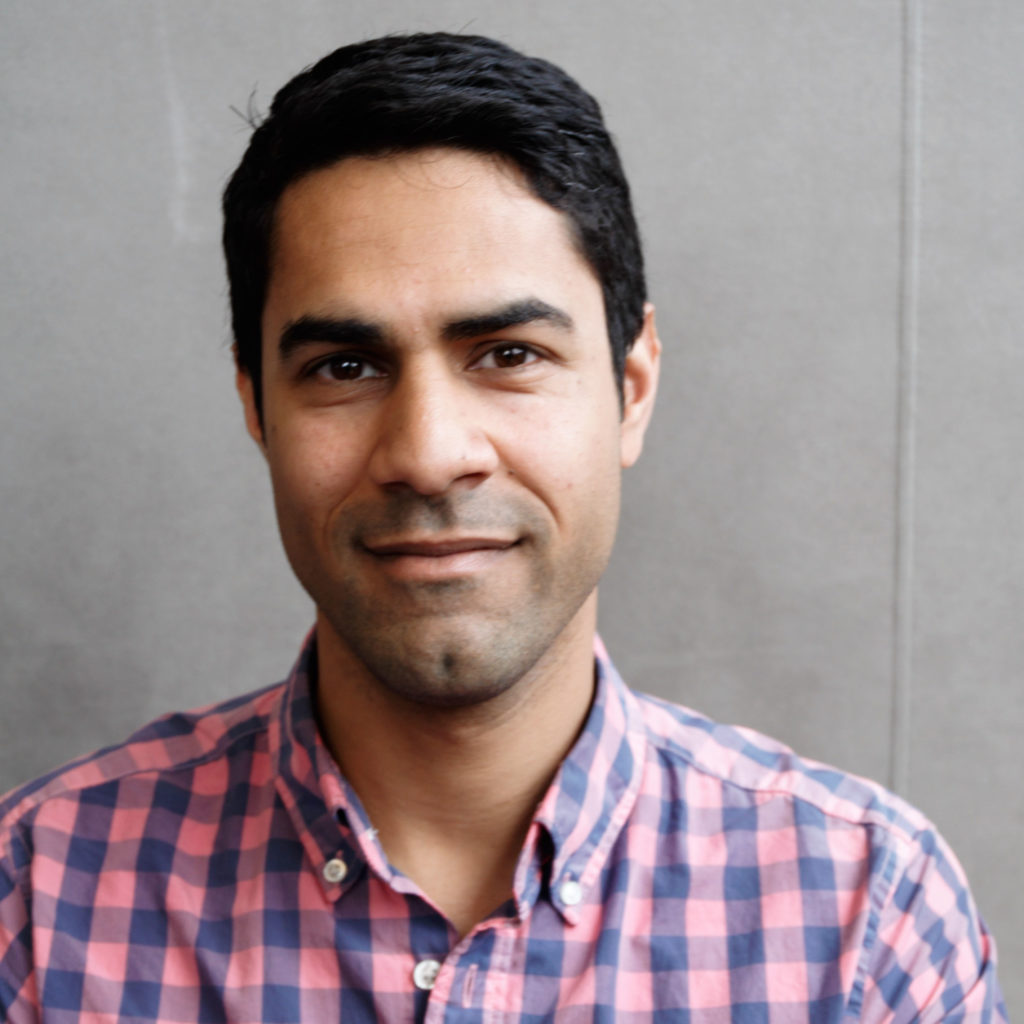
At the end of 2016, while Jafri was still in the middle of his photography fellowship, Trump was elected president. For Jafri, as for so many others in America, the world changed overnight.
“A lot of the people in my community felt marginalized and discriminated against through the course of his campaign,” he recalls.
Jafri is Muslim, and that is a prominent part of his identity—especially after 9/11, and even more so after the 2016 election.
“A lot of my work is on the Muslim community because it is my primary identity,” he says. “As much as it is a personal and spiritual identity, it is also a big part of my political identity.”
In response to the election and to that particular social and cultural moment (which we are still living today), Jafri got to brainstorming with his friend Justin Feltman and they decided to make a documentary film together, despite the fact that Jafri had never done any filmmaking work before.
“We thought Hamtramck would be perfect because it represents a lot of the communities that were being marginalized; namely the Muslim community and the immigrant community,” Jafri explains.
They knew they wanted to film the documentary in Hamtramck, an immigrant- and Muslim-majority city, but they needed to find a through line to connect the stories of the people of Hamtramck and the activism happening within the Muslim and immigrant communities there. When they learned there was going to be an election in Hamtramck in 2017, they knew they found their story. Filming began immediately.
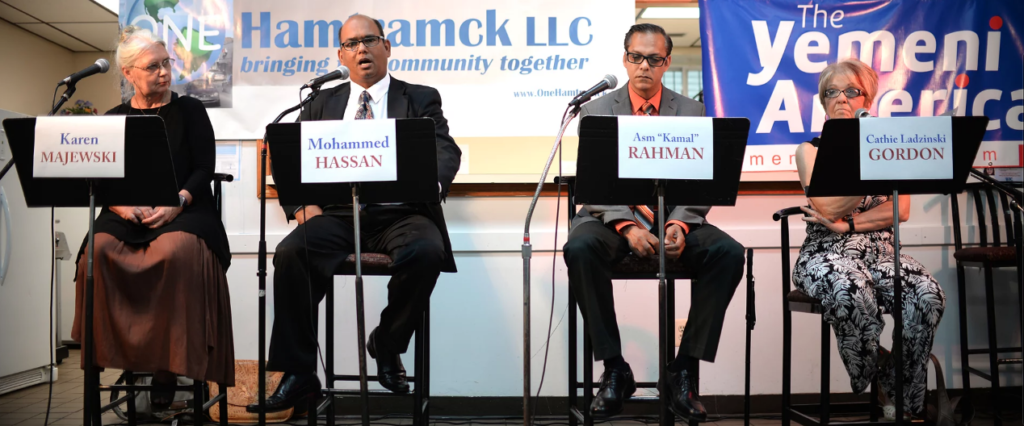
The film, Hamtramck, USA, examines democracy in America’s first Muslim-majority city, including the benefits and complexities of multiculturalism, through the lens of the 2017 city elections. Hamtramck is a tiny city of just two square miles, encompassed entirely by the city of Detroit. It is an immigrant-majority city and always has been—first with Polish immigrants arriving to work in the automotive plants, and now with immigrants from South Asia, particularly Bangladesh and Yemen. It is also America’s first Muslim-majority city.
“It’s a place that’s serving as a bellwether for a lot of the changes that will take place in our country over the next several decades, if not sooner,” Jafri says. “Our cities, counties, and states are becoming more and more diverse, and there is a lot that can be learned from Hamtramck’s achievements and failures along the way.”
The film is anchored in the city election, following several candidates who were running for city council and mayor, including political newcomers like the 23-year-old Iraqi immigrant running for city council, as well as a few activists working to make Hamtramck a more inclusive place. The film starts in the middle of the campaign season in the spring of 2017 and continues through the inauguration in January 2018. It includes the major milestones of the primaries and general elections, as well as a look at city life, like the wide range of cultural festivals celebrating the different ethnic groups that reside in the city.
“We wanted to paint a picture of what multiculturalism looks like in this city through this beautiful mosaic of rituals, festivals, sights, sounds, and colors—the things happening in the city beyond the elections,” says Jafri. “The elections are just the anchor of the story; they’re not the whole story. It’s not a political documentary. It’s about this city that is very unique, that defines and defies America, expressing ideas and tensions around multiculturalism.”
When he and Feltman started making the film, they had no idea what was going to happen with it; it was just this project they felt compelled to work on. They hope to have it broadcast on public television before the end of next year.
“Sometimes you feel like you’re doing so much work but don’t know what the point of it is because you don’t have a path for it,” Jafri says. But the only way to move forward is to move forward. “It’s like that expression, ‘How do you eat an elephant? One bite at a time.’ You just start it, then it goes from there.”
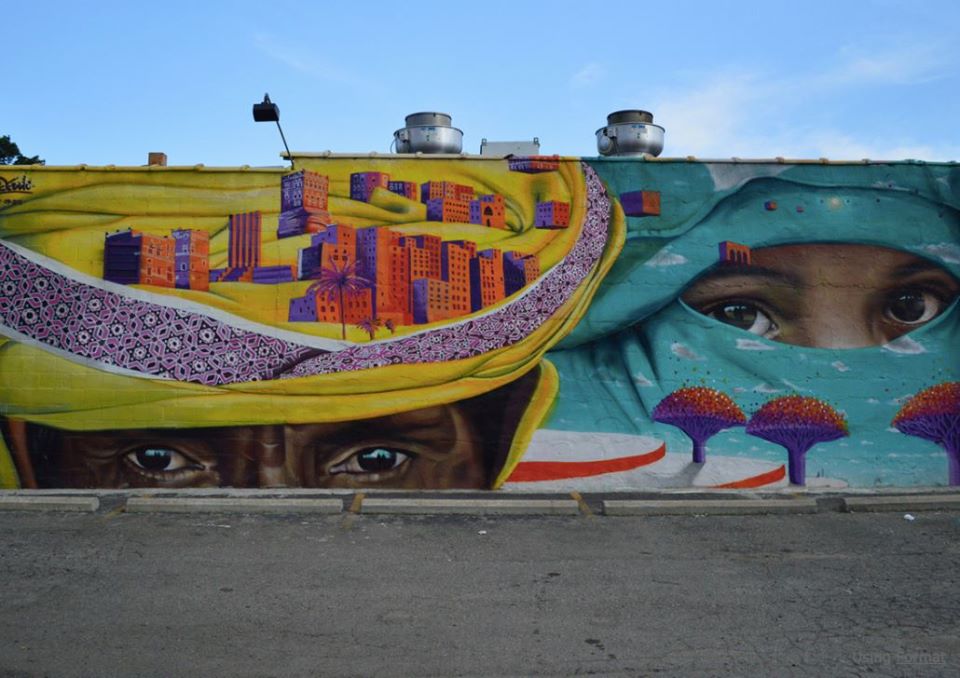
After Jafri had finished working on his Documenting Detroit project, he decided to reach out to Professor Sally Howell, Ph.D., who founded the Center for Arab American Studies at the University of Michigan-Dearborn.
Dearborn, an inner-ring suburb of Detroit, is especially significant here, as it is home to the largest Muslim and Arab populations in the United States.
“I knew they do some amazing research on the Muslim and Arab community in Southeastern Michigan, so I emailed her after I finished the documentary project and said I would like to contribute my work to your research in your publications and writing,” he recounts.
He was interested in contributing his work to her Building Islam in Detroit project that explores the development of mosques in Detroit over the last century. Instead, she suggested a new project she had started working on called Halal Metropolis, exploring Muslim visibility in Southeastern Michigan.
“We talked about different visibility phenomenon; once you see it you can’t unsee it,” he says, referring to things like McDonald’s locations in Dearborn advertising halal meat and the marketing inside the Whole Foods in Detroit targeting Muslims during Ramadan.
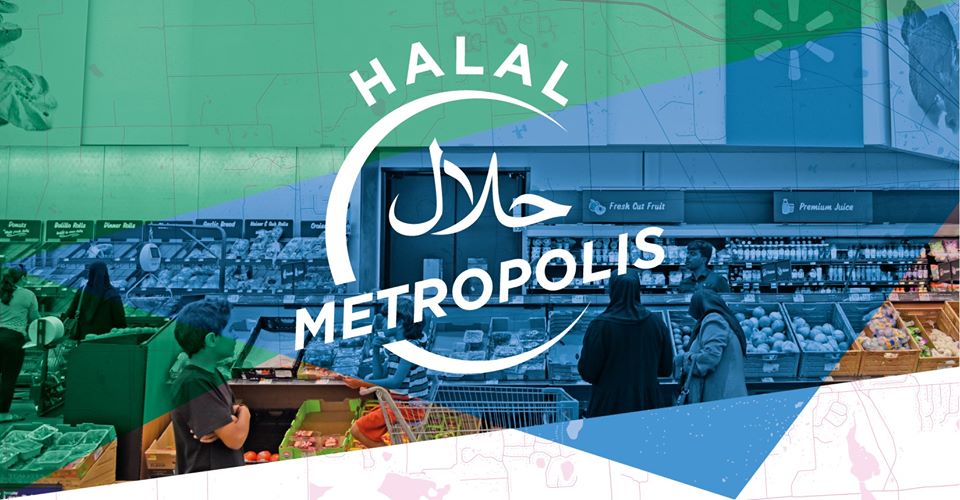
“As a photographer, I was documenting all of these things, and she was researching and writing about them,” Jafri says. It was a good fit, so Howell took Jafri on as documentary photographer and project manager. What was initially just supposed to be a collaborative book project got bigger and bigger, and soon Howell and Jafri knew it was more of an art project and they wanted to create an exhibit. Howell then brought in Associate Professor Osman Khan, an artist himself as well as director of the MFA program at University of Michigan.
Now Halal Metropolis has turned into a large-scale, multidisciplinary, multi-part exhibit that has so far been shown at locations in Hamtramck, Detroit, and Howell (a mostly-white, semi-rural exurb of metro Detroit), with several more planned for 2020 and 2021.
“We wanted to go to places where the Muslim community has less visibility, or where that visibility comes from fear and tension,” Jafri says of the current exhibit in Howell as well as the upcoming show in Mt. Clemens, another majority-white, low-income outer-ring Detroit suburb. Both cities are in counties that went to Trump in 2016.
Jafri describes Halal Metropolis as being “at the intersection of art, documentary, academic research, and exhibit design.” The project was selected as one of the 2018 winners of the Knight Arts Challenge and also received support from the Doris Duke Foundation for Islamic Art, Michigan Humanities, and the Community Foundation for Southeast Michigan.
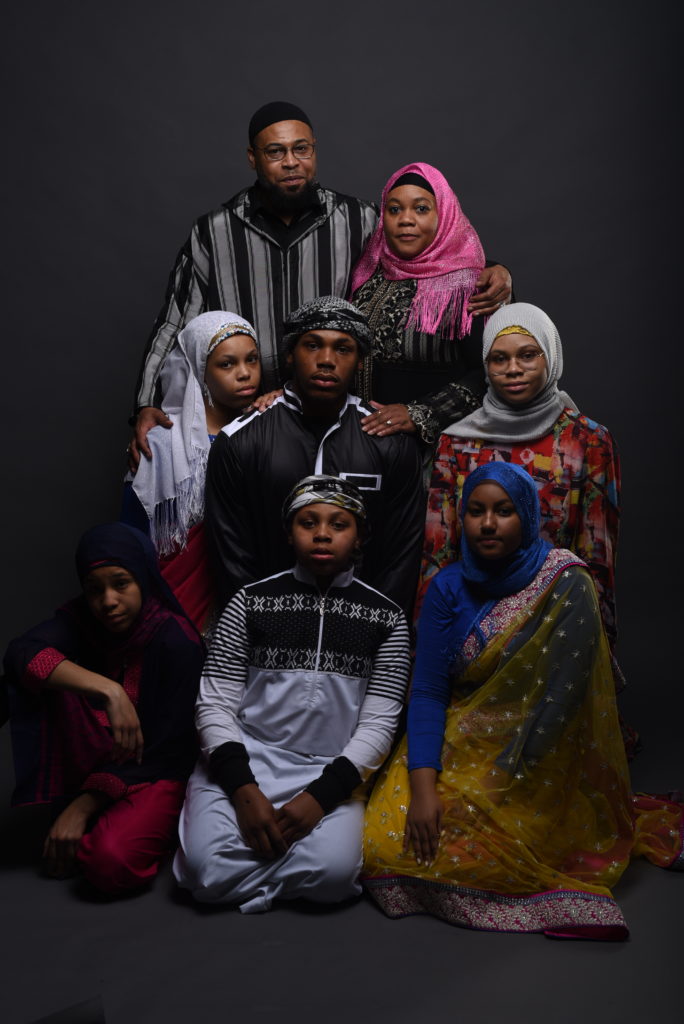
Each exhibit is unique. Before each exhibit, they issue a call for artists in the area or invite artists to submit work on the theme of “visibility.” Each exhibit is a multidisciplinary group show with video installations, performance art, poetry, graphic design, documentary photography, and more, with sections on history and archives that highlight different periods of Muslim history in Southeast Michigan and metro Detroit.
Each exhibit also has its own theme. In Hamtramck, the show focused on the visibility of Islam in fashion. In Howell, the show is dedicated to sports and hunting, highlighting Muslim visibility through national and local sports figures. The upcoming exhibit in Dearborn will feature a lot of public programming around food and influencer culture.
The exhibits also showcase works the organizing team has created, which incorporate a lot of what people in the area see on the streets and in people’s homes and businesses. For example, in Hamtramck, you’ll see car tattoos with verses from the Quran in Arabic, or the national emblem of Yemen (a golden eagle with a scroll) mashed up with the City of Detroit’s iconic old English “D.”
“These are also symbols of visibility for the Muslim community,” Jafri explains, and so they got an old car hood and had an artist create one of these car tattoos on it to include in the exhibits.
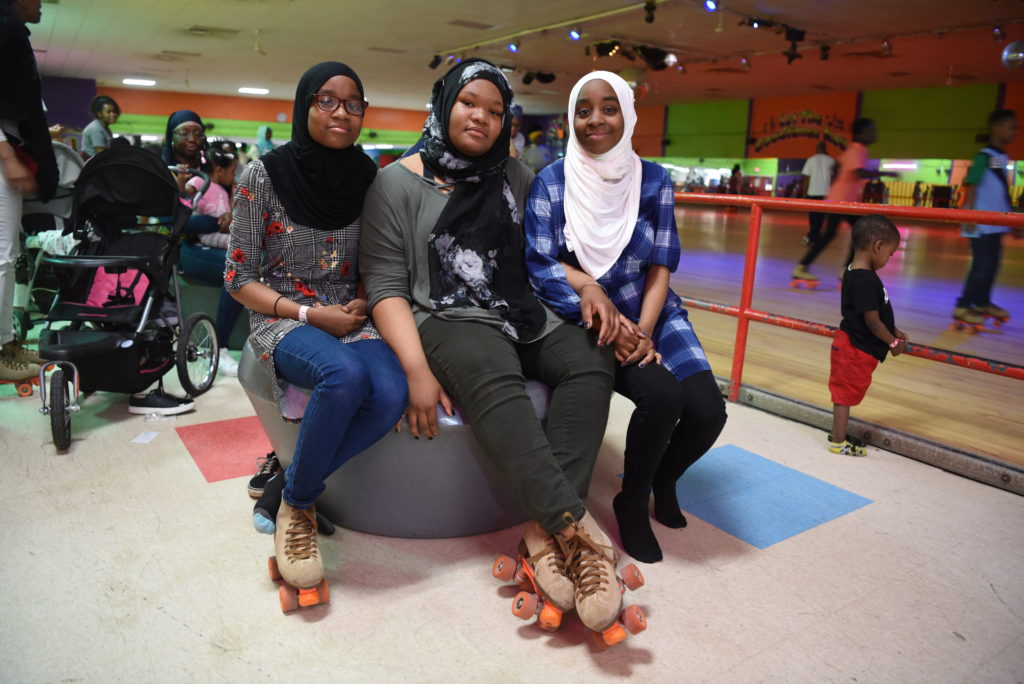
In addition to the art and archives, they also include a lot of public programming around the exhibits to invite the community in that area to come in and participate in the conversation. Public programming has included music performances, mural installations, family photos, greeting card workshops, panel discussions, design charettes, and more. In Howell, they had a panel on Muslim visibility in Livingston County, and also had a group of young women sing devotional songs and hymns.
“That was a really beautiful experience for people,” says Jafri. “We see a lot of people come in and it’s their first experience with Muslims and Islam, and they see a lot of wonderful, beautiful art. They’ve never seen something like that before.”
After the traveling Halal Metropolis exhibit concludes in 2021, Jafri says they hope to create a toolkit so other places can do similar projects.
“Places like Philadelphia, New York, and Chicago are also important for Islam history in the U.S.,” he explains. “We really want this exhibit to go to other places and have other communities do their own Halal Metropolis.”
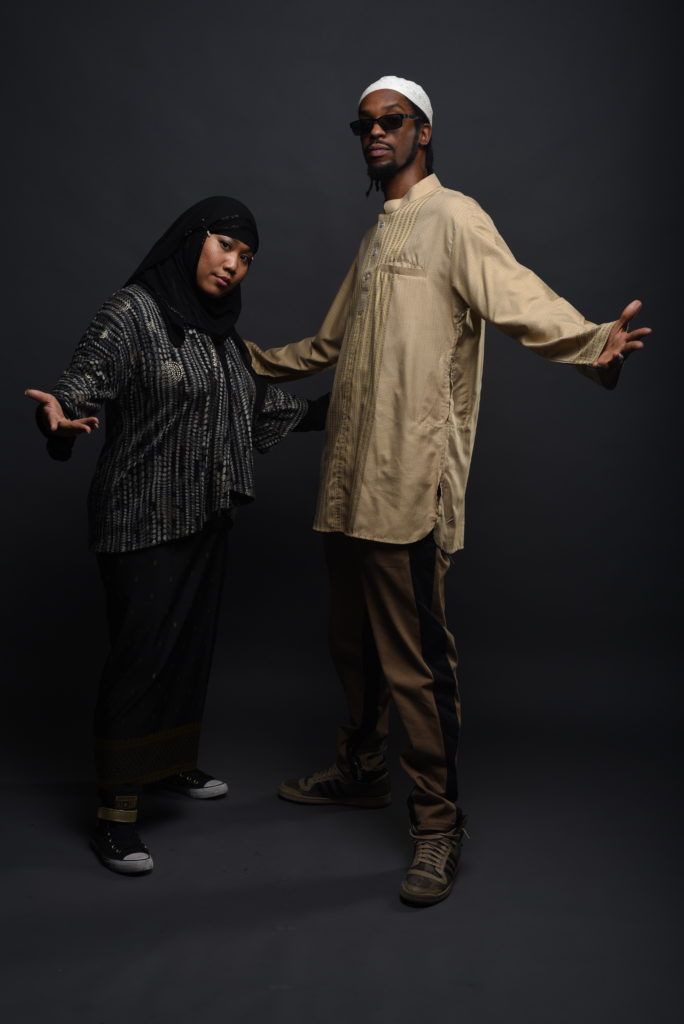
In addition to Hamtramck, USA and Halal Metropolis, Jafri is also currently producing a documentary series called Loyalty: Stories, which follows three Muslim chaplains in the military. He presented the series at a panel at Sundance last year, and hopes to be done filming in 2021.
While much of Jafri’s work revolves around raising the voices of American Muslims, he says he is also interested in other marginalized communities and wants to do work that promotes their narratives and gets their stories out as well.
After a decade of feeling ill at ease in his career, the accidental filmmaker now feels like he has found the career that gives him purpose.
“Filmmaking is an expression of my activism, creativity, and desire to tell stories,” he says. “It’s this great combination of things I’m passionate about and issues I want to push forward. I’ve started down this path now, so I’m hoping it leads to robust career.”
Razi Jafri is a Salzburg Global Fellow, part of the 2019 cohort of the Salzburg Global Forum for Young Cultural Innovators. Springboard for the Arts Associate Director Carl Atiya Swanson is also a Fellow, read his reflections on the Young Cultural Innovators Forum.

(1) How do you like to collaborate?
I LOVE to collaborate and I love working with people of different backgrounds and experiences. One of the things I’ve learned from lots of collaboration is that I prefer to work with people with different personalities and skill sets than myself. I’ve worked with people who are similar to me and it doesn’t go anywhere because we’re bringing the same things. You can’t have two ideas people; if someone is super-organized, you need that person because I’m disorganized and it’s a liability. I joke with Justin that I’m the heart and he’s the brain. The big takeaway here is, work with different personalities and skills.
As a cinematographer or photographer, I’m not that much better or worse than anyone else, but the thing that sets me apart is my ability to connect with people and find unexpected connections between seemingly unconnected people and ideas. I’ve been able to bring a lot of visibility to this work because of that. In collaboration you can create something beautiful. That’s what a symphony is: many people bringing notes together in beautiful way.
(2) How do you start a project?
I make decisions with my gut. I tend not to be very rational about things. I tend to be attracted to ideas in a magnetic way. Any idea that excites me or arouses me I tend to jump on it and figure out the details later. I bring an energy that gets the project going. In starting a project, the idea gets me going and then the details come later.
(3) How do you talk about your value?
That’s a question more artists and activists should think about! Values are not the things we say about ourselves; they’re the things that we do that define who we are. Everyone wants to be a charitable person and there is a certain prestige associated with philanthropy, but values are what we do. For me it’s not about how I talk about my values, but more about how my values are aligned and manifested in my work.
Mine are values of justice, truth, and fighting for the underserved and underrepresented voices. When I was an engineer I would talk about a lot of these things and it gave me a lot of cognitive dissonance because I felt disconnected from my values. Now I feel like a truer version of myself. Your actions speak louder than words.
(4) How do you define success?
There’s always both a qualitative and quantitative answer to this. When you are working on big projects, chances are you’re supported by foundations, and organizations generally want to see a certain amount of numbers, whether it’s turnout or capacity building that took place. On the qualitative side, it’s the impact your work has on a social and emotional level, and that becomes a little more difficult to measure. We try to track the number of people who come to an exhibit, but on the other side through the avenue of public engagement when you’re there more tangible or ephemeral thing but can you feel hearts and minds changing.
For the film, it would be more impactful if it can be seen in a church or a library in places like Alabama or South Carolina—places where there’s not a lot of visibility or there are tensions around Muslims in America. That’s a type of success because you’re not just preaching to the choir. When the exhibit was going to Howell, my friends who are people of color said they were happy we were doing it there but they weren’t going to see it because “it’s the KKK headquarters of America.” I had to kind of do this reverse ally-ship thing with them, telling them that isn’t actually true and we were invited to come there; they wanted us there.
Often we have these conversations about how people need to understand people of color, but there’s a certain kind of experience in having this in Howell, and one way of looking at it is that people who are marginalized need to take a step forward and be uncomfortable, too. We’re asking white people to be uncomfortable, and that’s what I’m constantly doing, but we have to do that on the other side, too, and challenge our own misperceptions and misconceptions. I want to have those tense conversations, and also take the film to the South and the Bible Belt; that’s where it will have more of an impact.
(5) How do you fund your work?
Grants. We’ve been successful in applying for grants. We’ve also done crowd funding for the Hamtramck project, but that was very challenging. We raised $7,500 on a $30,000 campaign, but then we got a $40,000 grant from the Center for Asian American Media and it came at such a critical time. If we didn’t get that grant we would not have been able to hire our editor. If you can try to raise money for a project early on that’s ideal, but you have to have something to show; you have to have a prototype of some sort.
We’ve also done some individual fundraising, just calling friends and family and people in my network. That’s one of the benefits of being an outgoing person! People would give $50 all the way up to $5,000. It’s about being resourceful in the community. I also asked people to help us film as volunteers. If you can get people to exchange services, that’s also great. I also help mentor other filmmakers, so there’s a lot of giving and getting.
